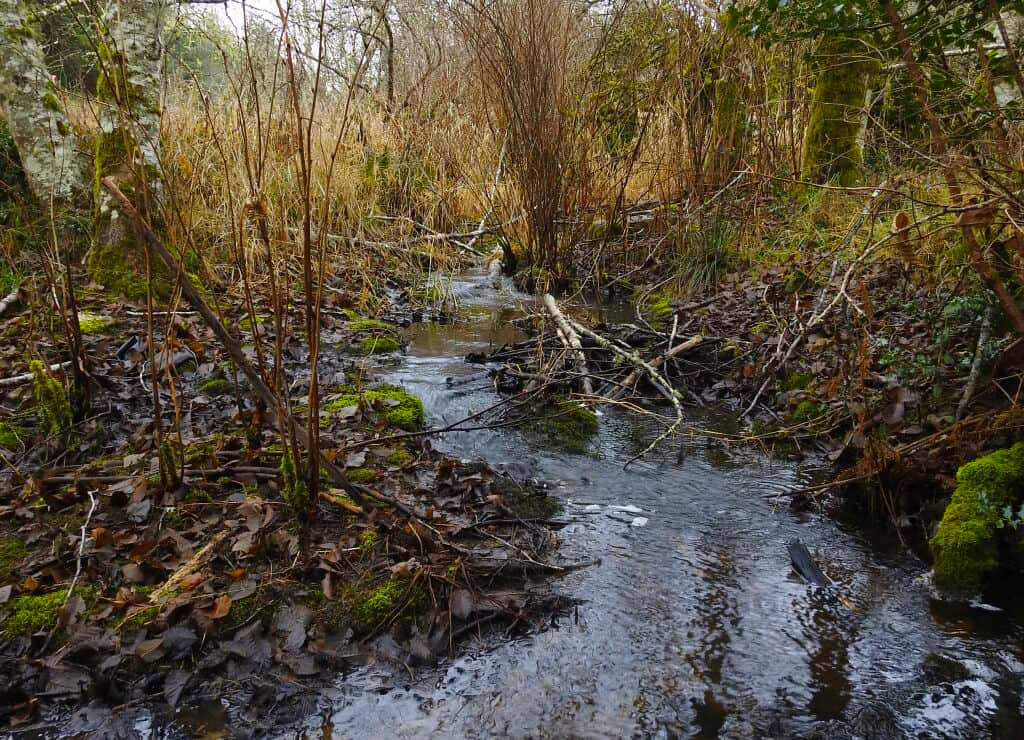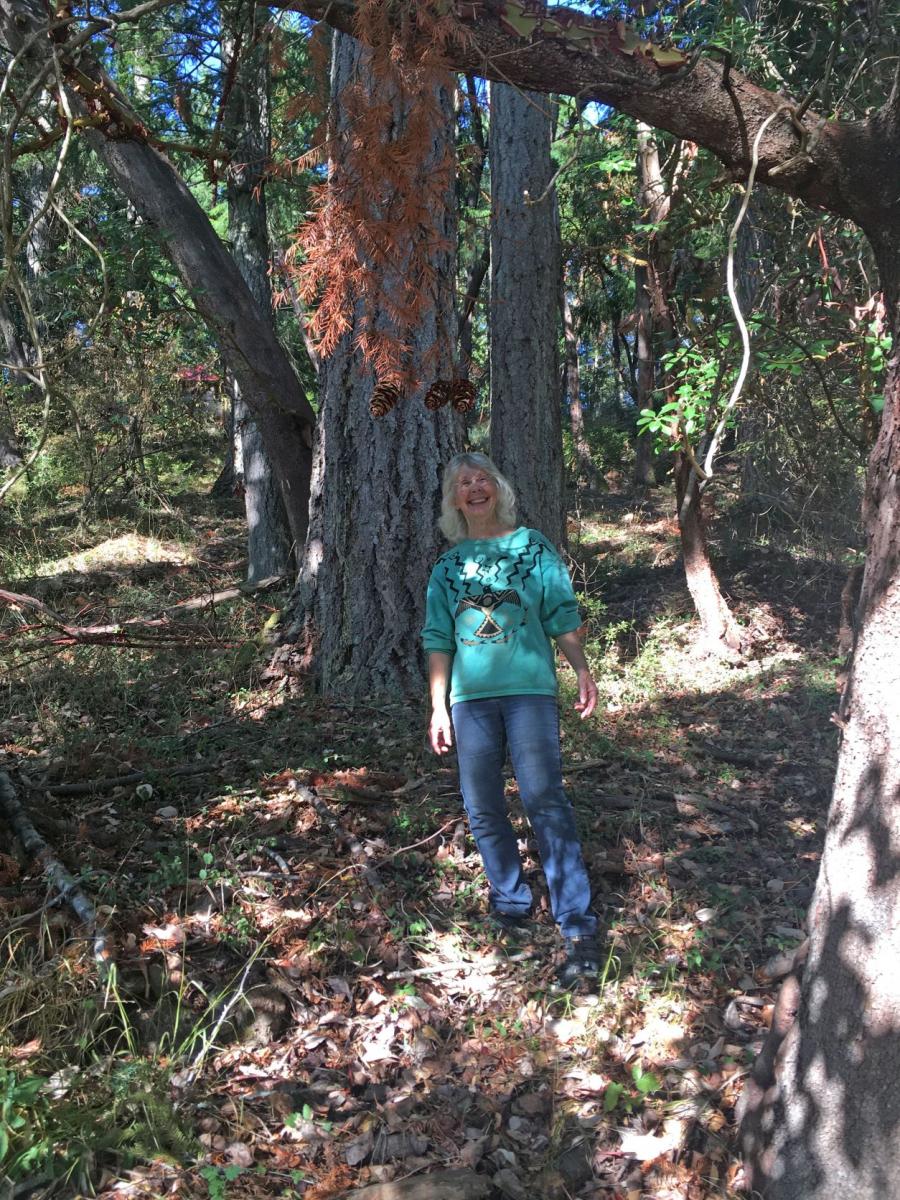
What legal options do community members have to protect threatened ecosystems on private property? West Coast’s Access to Justice team helps clients across BC to find innovative solutions – including unique legal arrangements that can preserve healthy lands and waters for the long term.
One such arrangement has secured lasting protection for a sensitive area on Salt Spring Island, and this community-led effort could hold lessons for other British Columbians working to protect nature in their communities.
The Salt Spring Island Water Preservation Society
The Salt Spring Island Water Preservation Society (SSIWPS) is a grassroots organization working to protect watersheds and drinking water on the island. It was co-founded in 1982 by a group of Salt Spring residents including Mike Larmour, who ran a small farm and took care to preserve the surrounding wetlands and woods on the property.
“He really understood the importance of the natural ecosystem values and benefits. He was ahead of his time in that type of thinking,” said Jean Wilkinson, a fellow Salt Spring resident and current president of the SSIWPS.
The area surrounding the Larmour farm contains mature forests of Douglas fir, cedar and bigleaf maple trees, which provide habitat for wildlife species such as the western screech owl and red-legged frog. Jean says these lands are particularly important for protecting water resources because the undisturbed wetlands and forested hillsides help filter water, reduce peak flows and slow erosion – delivering clean drinking water for many island residents.

Part of the forest within the Larmour Lands (Photo: Jean Wilkinson/SSIWPS)
When Mike passed away and the property went up for sale, one lot was sold and immediately logged, to the dismay of neighbours and SSIWPS members. Jean and her colleagues feared the entire property would soon be “stripped and flipped,” which is how many Gulf Islanders describe the increasingly common (and lucrative) practice of clearing forested land for residential development.
Concerned community members decided to step in to prevent the rest of the forest and wetlands in the area from meeting the same fate – not with petitions or rallies, but with donations and legal agreements.
Coming together to protect nature, with the right legal tools
 |
| Jean Wilkinson in the woods on Salt Spring Island. (Photo: SSIWPS) |
In fall 2020, the community’s impressive fundraising efforts allowed them to purchase one of the remaining lots outright. In collaboration with the Islands Trust Conservancy, they intend to protect this land for future generations by donating it as a Nature Reserve or using a conservation covenant – a legal agreement between a landowner and conservancy or land trust that ensures the natural features are protected in perpetuity.
Achieving long-term protection for the other remaining piece of land was more challenging. Not only would the purchase be another massive cost for a small community group with limited funds, but this area is partially cleared for farming, and some is part of the Agricultural Land Reserve (ALR) so it can’t be protected using the same legal tools as non-ALR land.
The group determined that they could protect the outstanding area by working with a conservation partner – a young couple who would contribute to the purchase and manage the farm, while committing to preserve the surrounding wetlands and trees. But when the SSIWPS approached a lawyer about pursuing this option, they were told it was overly complicated.
Of course, Jean and her colleagues were not about to give up.
“I was determined that somehow we had to make this work – and I thought of West Coast Environmental Law,” she said.
As a regular supporter of West Coast, Jean was familiar with the organization and decided to give us a call. She was connected with the Access to Justice department and applied for support through our Environmental Dispute Resolution Fund (EDRF).
With help from the EDRF, the SSIWPS was able to connect with lawyers Krista Vaartnou and Ryan McCracken, who helped navigate the complexities and find a legal solution that worked for this unique situation.
Profit à preservation
About 12 acres of the Larmour property is part of the ALR, and approximately half of that is cleared for farming – the rest contains valuable forest and marshland. With the added complexities surrounding ALR zoning, conserving the natural features in this area required a different approach.
Jean explains:
We were able to find a really good partnership with a couple who are going to farm about 6.5 acres, but we wanted to protect the uncleared portion and the wetlands – and some of those were on the ALR-zoned portion. So, in order to do that we used a profit à prendre, which is generally used so someone can purchase the rights to trees on a property. Usually it’s to log them but it can also be used to protect them, and that’s what we did there.
After several months and some complicated negotiating, the SSIWPS and their partners now have legal agreements in place to preserve the natural areas and maintain agricultural use of the cleared land. The profit à prendre (or “right of taking”) for the forested portions of this lot is now held by SSIWPS, granting the organization the rights to the trees and other natural resources.
In this case, the legal “right of taking” is being flipped on its head – preserving the land in its natural state rather than taking away its trees, wetlands and wildlife habitat.
Lessons for land protection elsewhere in BC
As the SSIWPS celebrates the success of their work to safeguard local forests and wetlands, we asked Jean if she had any advice for other British Columbians looking for legal solutions to protect the places and species they care about.
“Well the first would be to contact West Coast Environmental Law for advice and guidance – because even if we hadn’t had the grant funding, their advice was really valuable, and so was their connection with our lawyers,” she said.
“Don’t let the complexities overwhelm you…and don’t give up!”
West Coast’s Environmental Dispute Resolution Fund (EDRF) supports community efforts to defend the health of the environment and build a more sustainable British Columbia. The EDRF is proudly supported by the Law Foundation of BC.
If your BC community is facing an environmental threat and you’d like to speak to a lawyer, you can contact our Access to Justice department for free legal advice and support. Click here to learn more.